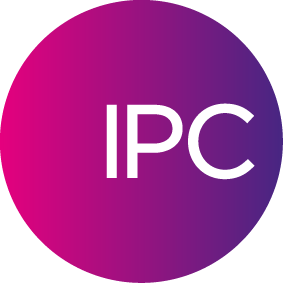By Jordan Feigenbaum, Product Manager, Financial Markets Network, IPC
Today’s financial markets participants must comply with newly emerging regulatory requirements which dictate the level of precision and accuracy of time for transactions. This was an important part of discussions at the Time and Money II Workshop presented by ATIS on January 23rd at the New York Stock Exchange.
I was proud to represent IPC as a sponsor of this event, which dealt exclusively with time sync requirements for the financial industry. Much of the focus for many of the attendees and speakers this year was around emerging changes and transformation in financial markets, MiFID II implementation, Time Synchronization trends, security and more.
1. MiFID II is here:
What path did you take to conform to the time synchronization rules in RTS-25?
It’s not a surprise that Time precision and stamping are at the heart of regulatory compliance with MiFID II RTS-25 placing strict requirements on the accuracy and granularity of timestamps and the maximum divergences of clocks that are being read. It’s essential to notice that Clock synchronisation subsequently plays a critical role in investor protection by being a mechanism that supports fair, efficient, and transparent markets.
Ensuring accurate and secure clock synchronization and time-stamping is a major challenge for financial firms. The need for pre- and post-trade transparency is a critical piece in earning and keeping investor trust in the capital markets. Any firm that trades in the United States or European Union needs reliable, synchronized clock feeds to connect to their trading applications and order management systems.
2. CAT NMS is also here:
Do you have to comply with the 100 microsecond or the 50 millisecond rule? How are you achieving that?
As a reminder, the Consolidated Audit Trail will track orders throughout their life cycles and identify the broker-dealers handling them, thus allowing regulators to more efficiently track activity in Eligible Securities throughout the U.S. markets.
The primary goal of the Securities and Exchange Commission (SEC) Rule 613 is to improve the ability of the SEC and the self-regulatory organizations (SROs) to oversee trading in the U.S. securities markets.
3. Security is Core:
Now that the regulations are in place and effective, it’s time to focus on reliability and compliance. How are you going to make sure that your time feed stays secure and dependable? How will your firm deal with the consequences of missed data? And perhaps most importantly, how can you do it cost effectively?
There are inherent issues and challenges with GPS; especially ensuring that GPS-based feeds remain as reliable as possible.
Signals are susceptible to jamming and spoofing (whether accidental or intentional), antennas can be mistakenly blocked, and equipment can fail. The finance industry is beginning to recognize the complications with GPS, something that many professionals in the government and military sectors have been telling us about for some time now. The U.S. Congress is taking action to enhance and secure GPS for the future, but practical solutions are still not available and the ultimate next steps are likely still years away.
But speaking realistically, you’re most likely limited to using a GPS-based for your time synchronization needs. Yes, in some limited locations you can bring in a direct feed from an atomic clock, but it’s only available at very few sites globally and the cost can be prohibitive. A GPS time feed is the most practical and cost effective option for many of companies.
So how do you ensure that you meet your regulatory requirements and satisfy your compliance team initiatives, while also managing the risks and controlling costs, all at the same time?
4. Choosing a solid vendor to deliver a clock feed is a good first step:
IPC’s Connexus Chrono is available in many of the world’s major financial market cities, and we can deliver a feed with built-in backup and redundancy to many colocation centers where you’d need such a service. Connexus Chrono is a GPS-driven solution. All Connexus Chrono sites are supplied with rubidium holdovers, ensuring that a compliance-ready time feed can be held for many days during a possible GPS outage. Additionally, IPC’s preferred build involves multiple GPS antennas in distinct locations, to make sure that you can continue to receive your valuable time feed in the case of a localized GPS issue. All of this gives IPC the ability to manage around the sorts of issues that can negatively impact time feeds delivered by GPS.
More about Connexus Chrono solution
IPC delivers the Connexus Chrono solution from multiple critical colocation facilities across the European Union, North America and Asia. Accurate, reliable and auditable time feeds are established using the GPS satellite network, which itself receives time from the atomic clock located at the United States Naval Observatory in Washington, D.C., to ensure the same time is available for all Connexus Chrono clocks globally. Connexus Chrono can be delivered at a variety of different levels of accuracy ranging from 1 microsecond to 250 microseconds. The Connexus Chrono offering continues as part of a broader strategic plan from IPC to offer an innovative and comprehensive suite of products and services related to compliant communications.
© 2018 IPC Systems, Inc. All Rights Reserved. The contents of this publication are intended for general information purposes only and should not be construed as legal or regulatory advice.

